Understanding Codeine
Learn About Codeine
Codeine is an opiate, or narcotic, that is primarily used to treat mild to severe pain. Most codeine that is used in prescription medications is semi-synthetic, but it is possible to naturally derive codeine from the opium poppy plant.
Common versions of codeine include codeine sulfate, codeine phosphate, and codeine hydrochloride. Codeine is most often prescribed to relieve coughing, pain, and diarrhea. Brand-name medications that contain codeine include Contabflu, Phenflu CD, and Poly-Tussin. Depending upon the specific ingredients that were incorporated into a particular codeine-based medication, the drug’s effects may last from 6 to 24 hours.
Codeine is not as powerful as many other opiates, but with effects including long-lasting intense euphoria, the substance is enticing to individuals who engage in recreational substance abuse. In recent years, people have begun to mix cough syrup containing codeine with juice or a carbonated beverage to create an intoxicating drink known that is known by such slang names as purple drank, sizzurp, and lean.
Because codeine is manufactured in large quantities and is available in pharmacies throughout the United States, acquiring the drug for illicit purposes is relatively easy. Visiting multiple doctors, faking pain symptoms, forging prescriptions, and stealing medications that contain codeine are among the many means by which codeine is obtained for illicit purposes.
Leading treatment centers understand the unique challenges facing individuals who have been abusing or become dependent upon codeine, and they have developed effective programming to help these individuals identify, address, and overcome the issues that either led to or have resulted from their substance abuse.
Statistics
Codeine Statistics
Codeine is the most commonly used opiate in the world, and is also considered to be the most over-prescribed medications. Experts estimate that between 30 and 35 million Americans use codeine or other opiate-based medications for unauthorized purposes every year.
Causes and Risk Factors
Causes and Risk Factors for Codeine
The abuse of codeine or any other substance can be influenced by a variety of genetic and environmental factors, such as the following:
Genetic: Having a close relative such as a parent, brother, or sister who has a drug abuse problem raises a person’s risk for having similar problems. Also, family history of mental illness can increase the likelihood that a person will engage in substance abuse. Recent research has identified several specific genes and gene clusters that appear to influence whether or not a person will be predisposed to addiction.
Environmental: Drug abuse within one’s family can also be an environmental influence, as children who grow up in houses where this behavior is common are more likely to emulate it than are those whose formative years were spent in drug-free environments. Also, people who live in impoverished communities, have experienced trauma, or are subject to significant stressors may also be at increased risk for abusing codeine or another dangerous substance.
Risk Factors:
- Family history of substance abuse or mental illness
- Personal history of substance abuse or mental illness
- Being male (codeine abuse is more common among men than women)
- Being poor
- Being young (codeine abuse is becoming more popular among teenagers and young adults)
Signs and Symptoms
Signs and Symptoms of Codeine
The following signs may indicate that a person has been abusing codeine or a similar substance:
Behavioral symptoms:
- Acting in a dazed or confused manner
- Using prescription medications in a manner other than which they were intended
- Secrecy and deception about one’s actions, whereabouts, and associates
- Unexplained absences from work, school, or other responsibilities
- Decreased performance at work, in school, or in other responsibilities
Physical symptoms:
- Fatigue and/or exhaustion
- Glassy, watery eyes
- Slurring speech
- Clumsiness
- Lightheadedness
- Itchiness
Cognitive symptoms:
- Problems thinking clearly
- Impaired ability to express oneself
- Difficulty focusing on conversations
- Euphoria
- Confusion
- Delusions
- Paranoia
Psychosocial symptoms:
- Loss of interest or pleasure in activities or issues that were previously important
- Extreme irritability or impatience
- Significant changes in mood and energy levels
- Withdrawing from family and friends
Effects
Effects of Codeine
Codeine abuse has been associated with a wide range of short- and long-term health effects, including the following:
- Nausea
- Constipation
- Dizziness
- Excessive perspiration
- Slowed heart rate
- Weak pulse
- Seizure
- Hallucinations
- Urination problems
Co-Occurring Disorders
Codeine Addiction and Co-Occurring Disorders
The following are among the more common co-occurring disorders among people who have developed a substance use disorder involving codeine:
- Anxiety disorders
- Depressive disorders
- Bipolar disorder
- Attention-deficit/hyperactivity disorder (ADHD)
- Other substance use disorders
Withdrawal & Overdose
Effects of Codeine Withdrawal and Overdose
Effects of codeine withdrawal: The following are among the more common symptoms that may be experienced by an individual who is in codeine withdrawal:
- Powerful drug cravings
- Agitation
- Muscle cramps and abdominal pain
- Nausea
- Vomiting
- Diarrhea
- Extreme sweatiness
- Shakiness, tics, and tremors
- Insomnia
- Hallucinations
- Insomnia or hypersomnia
- Loss of appetite
Effects of codeine overdose: Codeine overdose can be extremely damaging, and potentially lethal. The following signs of overdose require immediate medical attention:
- Pancreatitis
- Confusion
- Disorientation
- Delirium
- Seizure
- Convulsions
- Heart failure
- Anaphylaxis
- Stroke
- Coma
- Death






